#( References )
Explore tagged Tumblr posts
Text
Dude these are sick thanks for sharing!
hot artists don't gatekeep
I've been resource gathering for YEARS so now I am going to share my dragons hoard
Floorplanner. Design and furnish a house for you to use for having a consistent background in your comic or anything! Free, you need an account, easy to use, and you can save multiple houses.
Comparing Heights. Input the heights of characters to see what the different is between them. Great for keeping consistency. Free.
Magma. Draw online with friends in real time. Great for practice or hanging out. Free, paid plan available, account preferred.
Smithsonian Open Access. Loads of free images. Free.
SketchDaily. Lots of pose references, massive library, is set on a timer so you can practice quick figure drawing. Free.
SculptGL. A sculpting tool which I am yet to master, but you should be able to make whatever 3d object you like with it. free.
Pexels. Free stock images. And the search engine is actually pretty good at pulling up what you want.
Figurosity. Great pose references, diverse body types, lots of "how to draw" videos directly on the site, the models are 3d and you can rotate the angle, but you can't make custom poses or edit body proportions. Free, account option, paid plans available.
Line of Action. More drawing references, this one also has a focus on expressions, hands/feet, animals, landscapes. Free.
Animal Photo. You pose a 3d skull model and select an animal species, and they give you a bunch of photo references for that animal at that angle. Super handy. Free.
Height Weight Chart. You ever see an OC listed as having a certain weight but then they look Wildly different than the number suggests? Well here's a site to avoid that! It shows real people at different weights and heights to give you a better idea of what these abstract numbers all look like. Free to use.
325K notes
·
View notes
Text




STEELHEART REDUX - PULSAR v3 References
#steelheart redux#references#pulsars#dragons#robots#probably the design i am happiest with in the comic i will be real i love these guys. my leggy weirdos
126 notes
·
View notes
Text
Past our lessons AU updated references are done!
Happy pride month dhmis fandom



#can you see the resemblences?#anyway. happy pride month to my gayest people#please do give them some love if you can this took a long of time^^#lil' doodle#dhmis#dhmis teachers#dhmis humanized#past our lessons au#dont hug me im scared#sketch the sketchpad#paige the sketchbook#tony the talking clock#shrignold the butterfly#colin the computer#dhmis healthy gang#healthy gang#laz the lamp#larry the lamp#dhmis tony#dhmis sketch#dhmis colin#dhmis shrignold#dhmis lamp#references#actual cake#sillies
48 notes
·
View notes
Text
handmade drawing references :)

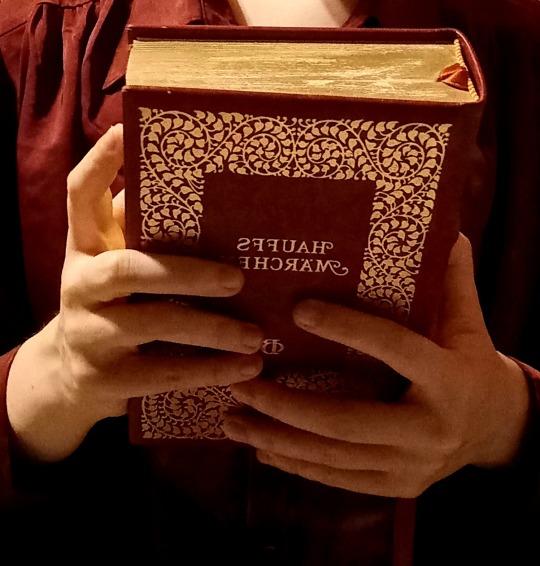
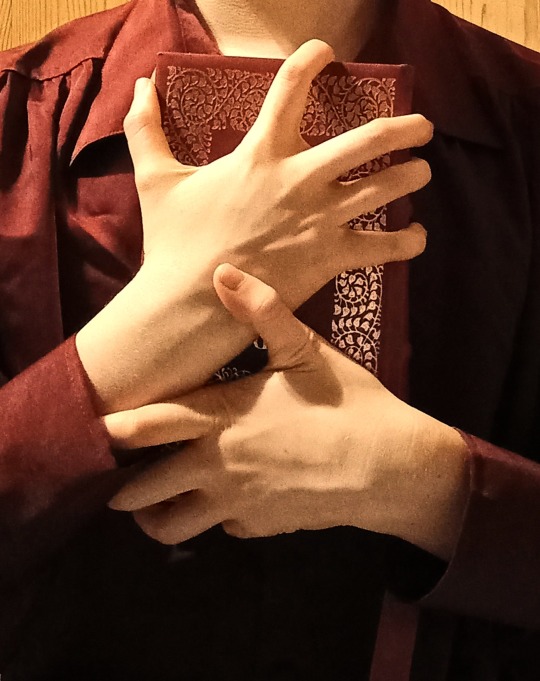
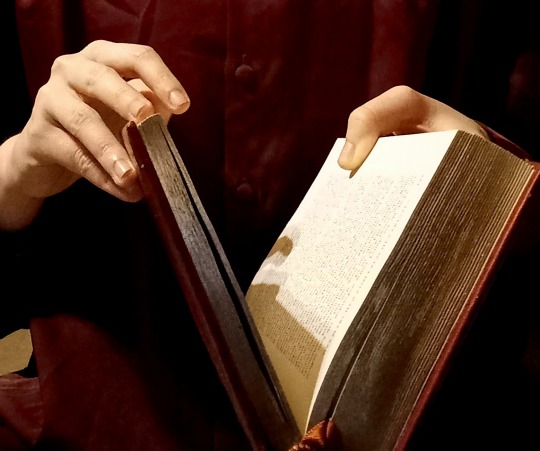

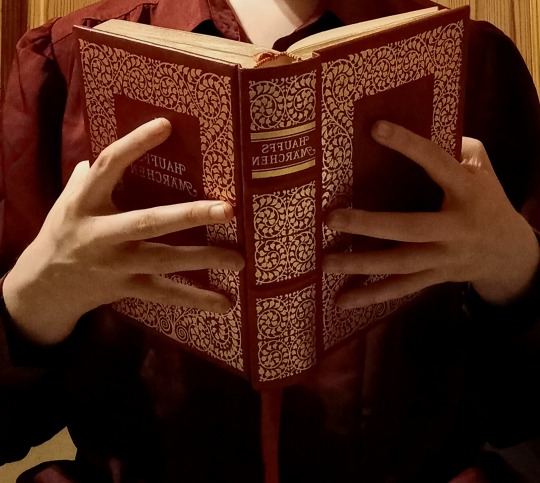

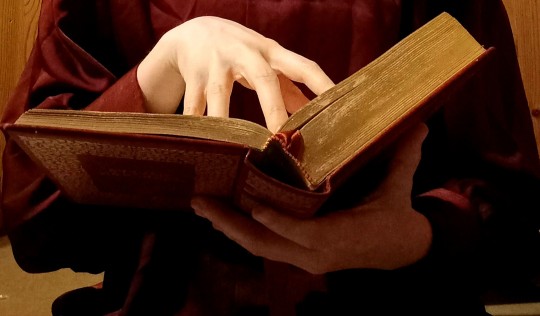
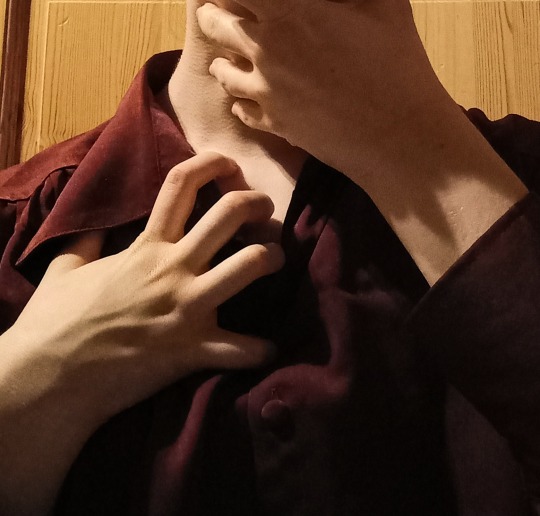
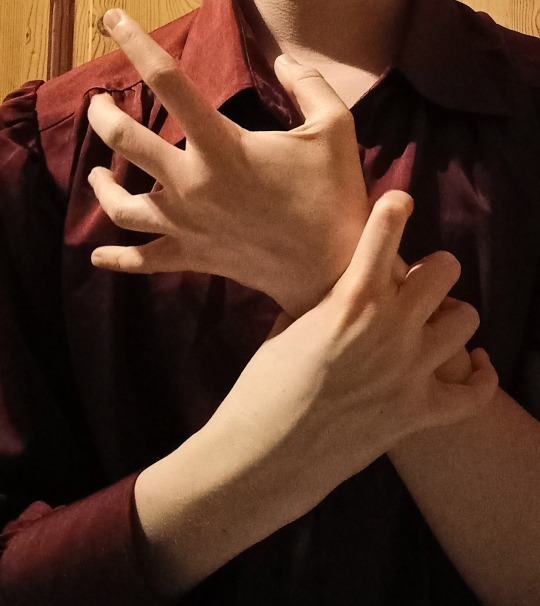

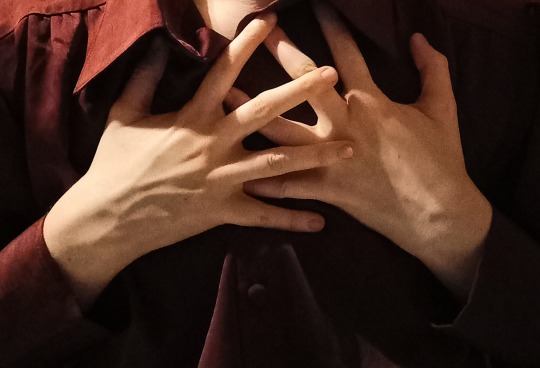
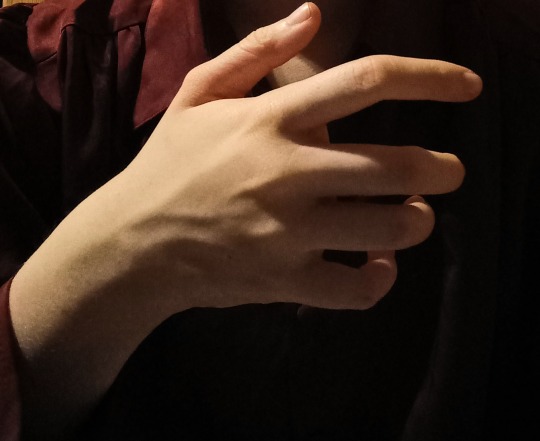

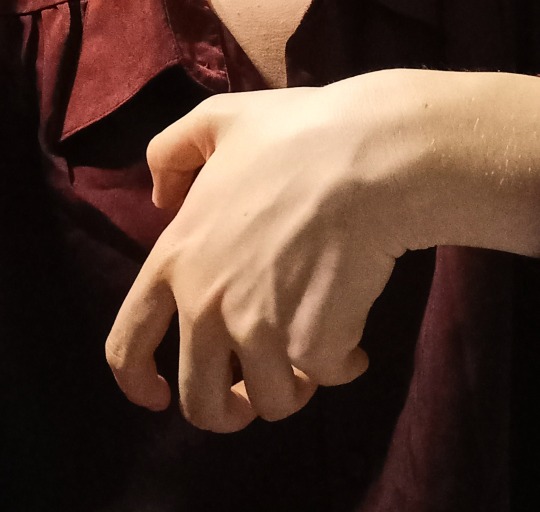

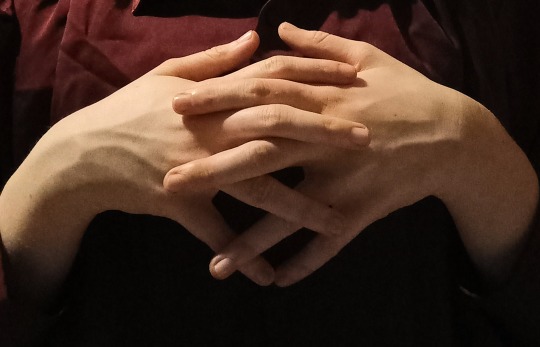
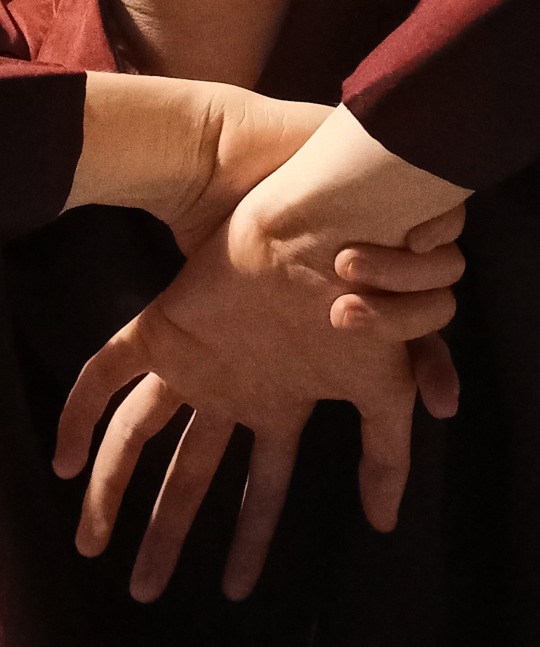
I took these pictures mainly to analyze my hand structure. Feel free to use them for your art, if you'd like to!
#hands#hand#book#books#reference#references#art reference#drawing reference#reference material#hand reference#book reference#reference photos#pose#poses
34K notes
·
View notes
Text
After that, this rec feels much more minor, but Figure Drawing Without a Model by Ron Tinner is pretty good for even treatment.

i know we joke about cis artists having the weirdest sense of anatomy, but also even when the anatomy is fine, no one seems to want to draw women doing normal things
169K notes
·
View notes
Text





I was practicing with krita and I had to draw them 💫🙇♀️💜🦋
#fanart#my art#sketch#arcane#jayce talis#viktor arcane#jayce x viktor#jayvik#vikjayce#krita#references
3K notes
·
View notes
Text
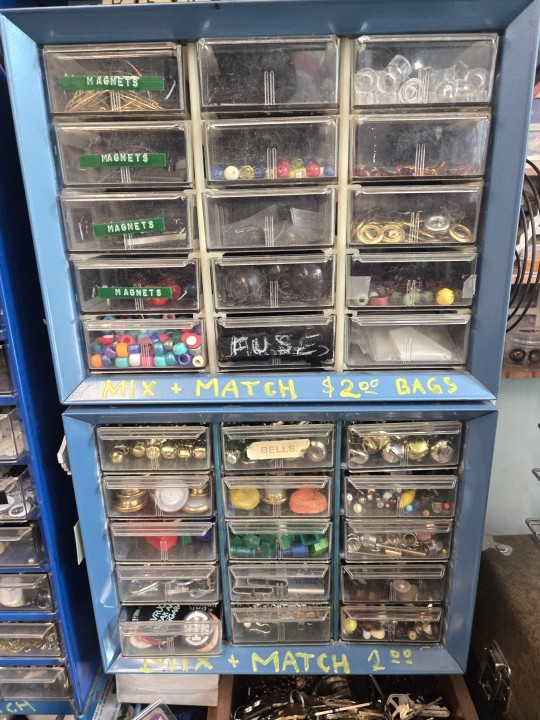
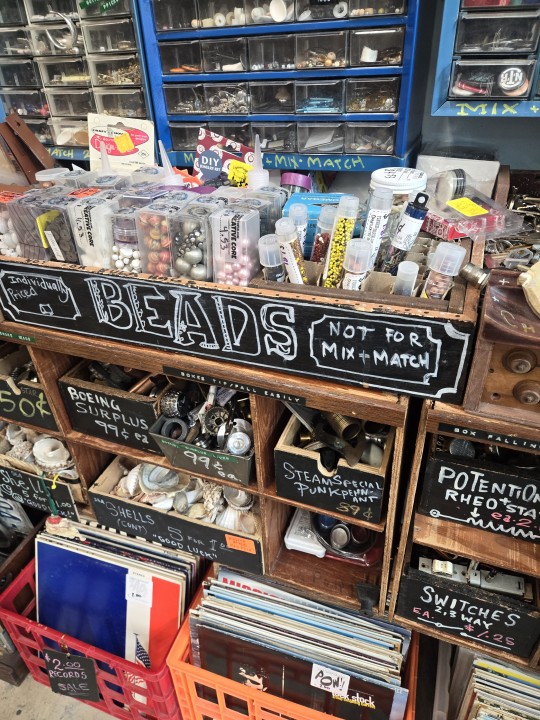
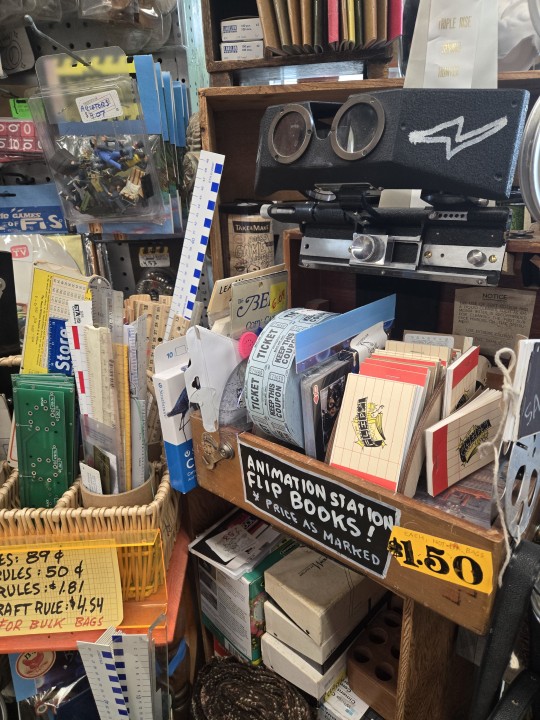
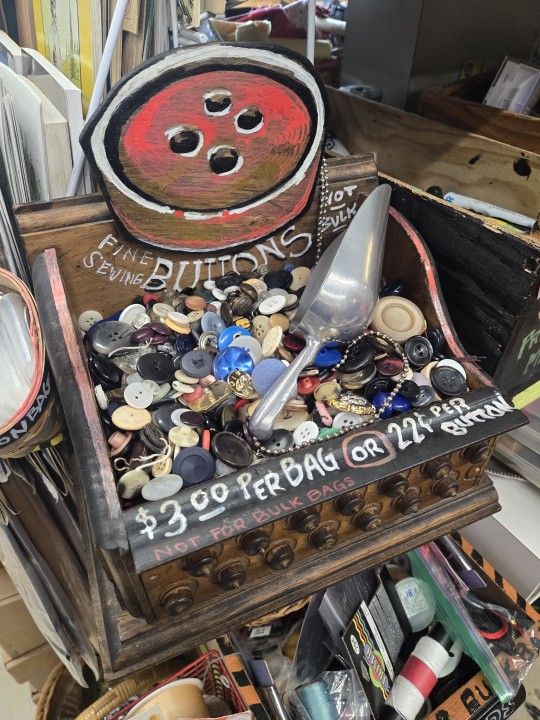
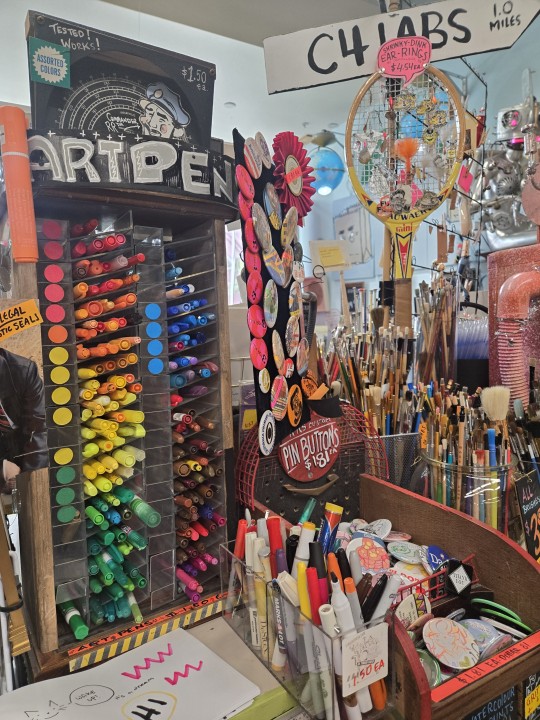
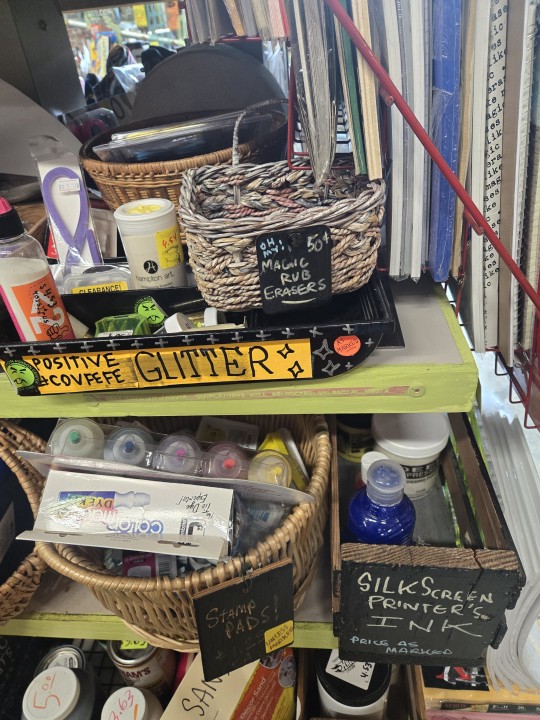
I learned that art thrift stores exist and went to my local one today
You can learn if there's one around you by searching up
Creative reuse center near me
This one is Tinkertopia in tacoma wa
5K notes
·
View notes
Text

2K notes
·
View notes
Text
Also because I have read a few fics with this:
If your character is sleep-deprived, hasn't eaten in a while, and/or has been sick to their stomach recently: alcohol is going to hit them *so much harder* and faster.
Also if it is the last one, the alcohol will probably *burn* going down. (Think hand sanitizer on paper cuts.)
If they haven't eaten in *days* and then drink five beers or a *bottle* of wine, they are either going to be incredibly sick and unable to keep it down and/or they are probably going to end up in hospital.
i love when fic writers who have clearly never tried any kind of alcohol in their lives try to write someone drinking bc they're always like
"he ordered a tall glass of hard liquor. after three large glasses he was feeling tipsy" like babygirl i can't be sure but i think u just sent this man to the hospital
91K notes
·
View notes
Text
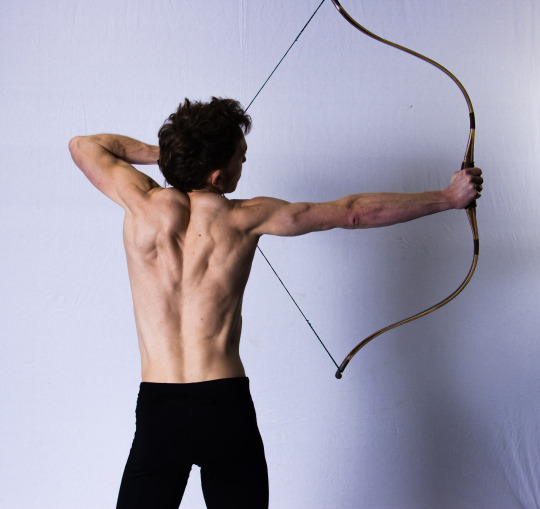
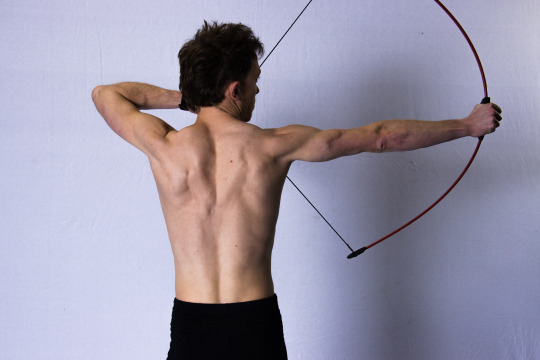

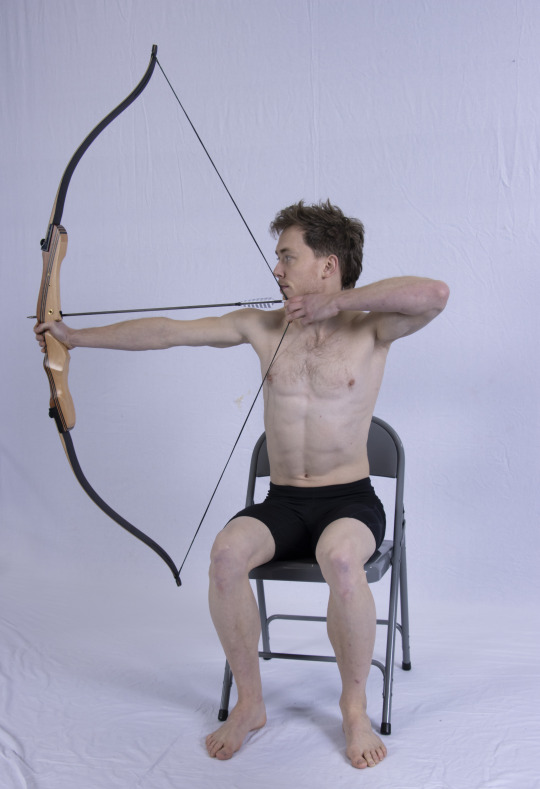
MORE IMAGE PACKS NOW ON PATREON
Do you want to see how muscle engagement varies when using bows of different weights? Or draw an archer running, seated, crouching or leaping? More image packs from my collaboration with @null-entity are now up on Patreon! P.S. give @null-entity a follow for more excellent image references
5K notes
·
View notes
Text
UPDATE 11/27/2024:
The full alphabet was found and has been made into a font.


Some notes:
Elvish uses a symbol for spaces between words. They do not use punctuation. K and Q are the same Elvish letter.
The elvish writing in DA4 is a 1:1 mask of English and can be decoded! The pic below is out of date, as the whole alphabet was found. In addition, Tevene, Anderfels, Antivan, and Nevarran alphabets can be linked to each other!

English, Elvhen, Tevene, Anderfels, Antivan, and Nevarran alphabets!!!
3K notes
·
View notes
Text
Hospital Lengths of Stay
I think people outside the USA severely overestimate how long hospital stays are here.
Like, appendectomy, right? That's maybe 24-36 hours door-to-door if there's no complications. If the appendix actually burst it might be 3 days, but only because they're giving you IV antibiotics and setting up home care to do that at home would take longer than just keeping you in the hospital.
A scheduled surgery like a hysterectomy, cholecystectomy, mastectomy, or anything else they can do laparoscopically (though small "keyhole" incisions)? You're probably not staying overnight at all.
Planned surgeries that need some kind of after care (like bariatric surgery, knee replacements, hip replacements, total vaginal hysterectomies, bladder lifts, etc...) would be usually 1-3 days.
Minor heart attack? 2-3 days.
Fracture and surgical repair of a large bone (like the femur)? About 2-3 days.
What about the exacerbation of a chronic illness like asthma, COPD, heart failure, or hypertension? IF they admit you (not just stabilize and discharge from the emergency department), it will be generally less than about 3-5 days.
Gunshot wound to the abdomen with surgery to repair things? 3-5 days.
And a stroke, sepsis, gunshot wound to the chest, or major heart attack? That would be somewhere in the 5-7 day range.
Severe trauma with multiple severely broken bones and relatively extensive surgery? This might be somewhat longer, but usually for nursing and pain control reasons rather than the surgery or injuries themselves. 1-3 weeks would be usual.
In the hospital for a mental health reason like decompensated schizophrenia or major depression? A little less than a week is normal, though some people stay several weeks if medications aren't working well.
The people who stay in hospitals for weeks or months typically have whole systems that don't work, or are waiting for a major organ transplant. For example, I had a patient once whose entire abdomen was open and couldn't be closed surgically. She was on TPN (IV nutrition) and IV antibiotics and needed massive amounts of wound care done every hour or so because her intestinal contents were spilling out of her open abdomen. She was there for months and ultimately didn't make it.
Are there people who stay longer than these cases? Of course! These are just averages pulled from medicaid data and personal experiences, based on patients who are coming in relatively healthy. Patients who have other significant health problems usually stay longer than patients who come in with a single problem.
But if you are otherwise healthy except for the reason you came into the hospital, unless you fell off a building or were in a massive car accident you are probably not staying in the hospital very long at all.
2K notes
·
View notes
Text
REBLOGGING THIS FOR HL REFERENCES!
Fantasy Guide to Fashion of the Victorian Era

(Yes, all of it)
Since I started these historical fashion references, one that seems to be the most popular is the Victorian era and for a while, I put it off because its a big undertaking. I mean, its sixty odd years and fashion changed so much. But I have an afternoon free and a cup of coffee so fuck it, we ball.
Undergarments

Undergarments fundamentally remained mostly the same throughout the era but due to changing silhouettes, certain things changed.
Women
Chemise: This is the underdress worn by all women under everything else. It would have made of linen and cotton and like most of the clothes of the Victorian era, changed with the times. In the early period (1837-40s), the chemise was loose and commonly knee length. The next twenty years, 1850s-1870s, the chemise got slightly more fitted. In the 1880s, due to the changing shape of evening gowns which we will discuss later on, sleeves chemises started being worn. Became more fitted as corsets tightened. Some chemises featured lace or embroidery for elegance.
Pantaloons: These are linen or cotton pants like items of clothing. They weren't really popular in the early end of the era but after crinolines started being used, they became a staple. Toward the end of the era, the pantaloons became wider and more flared.
Combinations: This is an undergarment worn from the 1870s on that combined the upper and lower layers into a single unit - almost like a longer version of a bodysuit. The crotch was split to allow the lady the freedom to use the lavatory.
Corset: Corsets are the structured garment that is worn on the upper body to support the breasts. It wasn't all about giving a lady a snatched waist. The corset started out longer in the 1830s-40s and the boning was commonly whalebone (Not actually bones of whales) if your lady can afford it or a substitute. In the 1850s-60s, corsets were shorter, the boning was replaced with steel which lent to the more rigid figure ladies were after. In the 70s-80s, corsets adopted a more prominent curve at the waist in order to support the bustle of the decades. The 90s, saw corsets becoming less restrictive and more breathable with more flexible options for boning.
Corset covers: Were like short vests worn over the corset to protect the fabric of the dress from the eyelets and fastenings of the corset worn from about 1840 on.
Hip pads: Worn tied around the hips to take the pressure off the hips frol the corset and bustle, worn around the 1870s-80s.
Stockings: Stockings essentially stayed the same but different fabrics and ways of securing them did change over time. The 1830s-40s, stockings were secured by a garter ribbon and usually made of wool or cotton. Wealthier women could opt for a patterns or a higher quality of fabric. The 1850s-60s, saw the rise of the silken stockings for wealthier women but the way of securing them remained the same. The 1880s-1901, saw the appearance of elastic garters and plain black stockings became more popular than colour.
Crinolines: A crinoline was a hooped petticoat that made skirts wider. These were made of linen and horsehair at first but crinolines were soon fashioned out of light spring steel. Working class women did wear them but they were much less pronounced and lighter. In the early Victorian era, crinolines were not used. But in the 1850s-60s, women started to wear them and by the late 60s, the biggest crinolines would span the skirts to almost five feet. Crinolines are so tied to our idea of the Victorian era but they were really only around for a short period of time.
Bustles: Bustles were there to add more junk to a lady's trunk, if you will. They were padded cushion like things or frameworks used to enhance the back of a lady's gown. Wealthy women had very prominent bustles while working class women would have worn them less pronounced. Bustles were worn in the 1870s-80s, just on the heels of the death of the crinoline. But once the 90s hit, the bustle lost popularity and skirts became slimmer.
Petticoats: Petticoats are lighter skirts of linen and cotton worn in layers over structured garments and under the main dress. They were worn for warmth and for structure. Before the dawn of the crinoline and the bustle, multiple layers of petticoats were used to add volume to the skirts. But during the crinoline and bustle eras, petticoats were no longer worn for volume but to keep the layers from snagging on each other. Women from wealthy classes and working class women both wore petticoats, but working class women wore much sturdier ones while the wealthier women would have worn lighter and more decorated versions.
Men
Shirts: Under-shirts were worn as a base layer for men. The shirts were usually made of cotton or linen and had long sleeves. In the early Victorian era, shirts were longer and worn tucked into trousers and had high collars. In the 1850s-60s, shirts became stiffer; they were pleated at the front and the collars were lower and stiffened. By the 1870s-80s, shirts became even more stiffer thanks to the trend of starch and worn with detachable collars which would be held in place with pins. By the 1890s-1901, shirts became a part of outerwear rather than a base layer retaining the starch and detachable collars.
Drawers: These are linen/cotton underpants. In the 1830s-40s, they were loose and worn long at the knee. Drawers in the 1850s-60s, became more fitted and flannel was beginning to become a popular fabric. In the 1870s-80s, drawers got even longer, reaching mid-calf and were now secured with buttons at the waist. Drawers remained popular for wealthier men past this point.
Union Suits: Union suits were a singular item of clothing that combined the underwear to a long-sleeved shirt. They were mainly worn by working class men, especially men who worked outside. Though invented in the 60s, they were not popular until the end of the era. And yes, they could go to the bathroom in them. There were two helpful flaps.
Stockings: Stockings were worn by men, usually made of wool or cotton and held in place by garters. Wealthier men opted for silk stockings around the 1850s-60s. Like the women, elastic stockings emerged around the later part of the era. Stockings were also secured by stocking suspenders, which were clipped to the waist for support.
Suspenders: Men did not wear belts in this era so suspenders were the only way to hold up one's pants. They were worn under waistcoats. In the early period from the 1830s-1850s, suspenders were made from leather or woven fabric and attached with buttons. In the 1860s-1880s, suspenders became elasticated and thanks to Mark Twain, yes that one, they became adjustable. From the 1890s to 1901, suspenders were still popular but belts were taking over and suspenders were mainly worn by the upper class as a symbol of sophistication.
Day Wear

If the undergarments only changed a little, the outer layers changed significantly. Fashion really took off in this era, giving us some of the most recognisable silhouettes.
Women
Day wear for women changed with each decade due to changing status symbols and expectations. I'm going to break it down to skirts, sleeves, hats and bodices to show the differences between each era.
Skirts:
1830s-1840s: Wealthier women favoured dresses that sported wide skirts. Working class women had less voluminous skirts.
1850s-1860s: Wealthier women wore very large crinolines that expanded the skirts into an extreme bell-shape. Working class women wore crinolines too but their skirts did not reach the volume of the wealthier class, mainly out of practicality.
1870s-1880s: As I mentioned above, wealthy women wore very prominent bustles which sort of pulled back the skirts giving it a flat shape to the front and a larger bump in the back (the mullet of dresses if you will). Working class women also wore bustled skirts and they were far less pronounced.
1890s-1901: Skirts became simpler in shape for both classes and now could be worn as part of a two piece suit or as a dress.
Bodice
1830s-1840s: Bodices of this era featured high necklines for day wear and ended in a V-shape, to make that waist look snatched.
1850s-1860s: Bodices started to become more structured and the necklines began lower slightly, taking on square or more rounded shapes.
1870s-1880s: High collars came back into fashion and bodices became longer. The tailored jacket look started to become popular for both upper class and working class.
1890s-1901: Bodices became longer and the tailored jacket and skirt combo was still alive and well worn by both upper and working class women.
Sleeves
1830s-1840s: The gigot or leg o' mutton sleeves became popular in the 1830s. Theses were very large at the upper arm and slimmed down as it reach the wrist. Toward the end of the decade, sleeves became a little more fitted. Pagoda sleeves were also popular in this decade, where the sleeve was more voluminous toward the elbows. These were worn by both classes, with the working class women wearing far more understated versions while the wealthier ladies went a bit crazy with it.
1850s-1860s: This decade saw the rise of the bishop sleeves. This sleeve was gathered at the shoulder and slimmed toward the wrist for a close fit. Bishop sleeves slimmed down at the decade came to a close but the pagoda sleeves became even wider. Working class women would wear versions of them but much more refined versions.
1870s-1880s: Sleeves began to adopt a little puff at the top with a slim sleeve that gradually grew larger as the decade drew to the close. Both classes of women would have worn them but working class women would wear slimmer fitting sleeves.
1890s-1901: The leg o' mutton sleeves emerged again and they were back and bigger than ever at the early part of the era, large and in charge at the top and gradually thinning as it reached the wrist. As the decade closed out, the puffy shoulders started to get way slimmer.
Hats
1830s -1840s: Bonnets were worn by both classes, usually of straw or cloth. They would cover the ears and all the hair. By the 40s, velvet and silk was starting to become a popular fabric for the upper class. Working class women would also wear bonnets. During the end of the decade, bonnets began to pull back from the face. Working class women might wear a mob cap while working. Neither class of women would leave the house without a bonnet. Hats could be decorated with ribbons and cloth flowers.
1850s-1860s: Bonnets were still worn but hats became taller with and higher crown. The upper class became to make decorations more ostentatious, with fabric flowers, feathers and jewelled broaches. Working women would still wear their hair under caps when working but would wear simpler versions of the bonnet and the newer taller versions. By the end of the decade, hats began to get smaller and sailor hats and toques started to become popular. This was mainly due to large hairstyles worn by the 60s but hats were still heavily decorated.
1870s-1880s: Bonnets grew higher-crowned with wider brims that turned upwards from the face, by the end of the decade ladies were wearing larger and flatter designs. The embellishments got even more excessive. Working class women would wear less extravagant versions while out and about, wearing caps while working. To keep these often heavy and cumbersome hats in place, women would secure hats with pins, which were long needle like implements that doubled as tools for self-defence.
1890s-1901: Wide-brimmed hats were popular and decoration got every out of hand for upper class ladies. The demand for feathers saw to the extinction of many birds. But as the decade ended, some women especially the working class started wearing much smaller and flatter versions of the brimmed hats like boaters so they could be more active.
Men
Day wear for men did change over the decades, but the changes were more subtle than the ladies.
1830s-1840s: In this era, men wore trousers, shirts and coats. Frock coats was the most popular style of coat for during the day and as the decade wore on, they became longer and more fitted for the wealthier set of men. For working class men, simple coats of wool were popular. Waistcoats were often worn in this decade by both classes, the working class would wear them far more simpler while the wealthy class favoured louder patterns and fabrics. Trousers were high-waisted and slim for the wealthy class, it was even popular to wear them with instep straps to keep the trousers as straight as possible. The working class favoured a straight leg and also. Shirts for the wealthy class would have high stiff collars, worn with stock ties and cravats. Working class men would also wear cravats but their collars wouldn't be as high. Wealthy men would pair it with a top hat while working class men favoured flat caps.
1850s-1860s: The frock coat was still in fashion for the wealthy class but the fabrics changed over time and men favoured double-breasted coats in this era. The paletot was also worn in this era, featuring a peaked lapels and was worn unbelted. Working class men stuck with the same style of coat. Working class men stuck with the same waistcoats and trousers. Shirt collars were lower for both classes and both continued to wear cravats and ties.
1870s-1880s: This era featured more change for the men. This was the era of the morning coat and tailored suit, frock coats started to become less popular. Working class men wore sack suit jackets, which were less fitted and easier to move in. Trousers started to get slimmer again for both classes. Wealthy men started to carry walking sticks along with their top hats and gloves while working class men carried on with their flat caps.
1890s-1901: This is the era of the three-piece suit, where the jackets, trousers and waistcoat would all match. Trousers remained slim and jackets got shorter. The working class wore three piece suits also but these were more practical and made of sturdier fabrics.
Evening Wear

The Victorian age was still an age to party and evening wear was different to what anybody would wear outside on the street.
Women
1830s-1840s: For the wealthy, evening gowns sported large skirts, tight bodices and short sleeves that bared the shoulders. Wealthy women would accessorise with long gloves, fans and decorative combs for their hair. Working class women would stick to a simpler silhouette but the skirts would be as thick as they could afford and often sported high waists. Working class women had higher necklines for their evening wear and would usually wear whatever jewellery they had.
1850s-1860s: For the wealthy, skirts were even wider thanks to crinolines, necklines were lower and usually square or sweetheart in shape. Sleeves were puffed and short. Again women would carry fans and wear gloves. Working class women again would stick to a simpler silhouette with long sleeves though they could wear shorter sleeves if they wanted. They would style it with whatever jewellery, usually a nice broach.
1870s-1880s: For the wealthy, with crinolines gone and bustles in, skirts were less bell shaped and now, flat at the front with the bustle in the back to add volume. Décolleté necklines showed off the shoulders and upper chest. Gloves were a must. Working class women again kept it simpler, their bustles much smaller. Necklines were lower but far higher than that of the wealthy class.
1890s-1901: For wealthier women, evening gowns grew slimmer and the décolleté styles neckline remained popular. Gloves were a must. For the working class, women would wear slimmer gored skirts with square or v-necklines, still higher than that of the wealthy class. Again they would pair this with whatever jewellery they had.
Men
1830s-1840s: Wealthy men would wear tailcoats, with waistcoats of rich pattern and fabrics. Trousers like daywear remained narrow and might have featured a stirrup to keep them straight. Cravats would be of richer fabric and often pinned with more expensive pins. Cufflinks would also be worn. Top hats tied the look together. For the working class, men would likely wear a clean outfit very much like they would wear during the day.
1850s-1860s: Wealthy men still hung on to tailcoats but this era saw the rise of the tuxedo jacket, waistcoats got shorter and it was popular for them to be double-breasted. Cravats were abandoned for bow ties and men adopted leather shoes to tie the look together. Top hats were still a must. Working class men began to adopt the sack suit jacket for evening wear but they typically wore day wear suits on evenings out.
1870s-1880s: The wealthy men started to wear waistcoats with lapels, bowties became standard for evening wear and dinner jackets overtook tailcoats. Working class men stuck to the sack suit jacket and their day wear.
1890s-1901: Wealthy men's waistcoats started to get more fitted and started sticking to plain white or cream. Bow ties got smaller and tuxedos became the prominent style of evening wear. Opera hats overtook top hats both both would still be worn. Working class men still stuck to using a clean day wear suit on a night out.
Bed Wear

The Victorians also had a whole wardrobe to go to bed in.
Women
1830s-1840s: Both classes of women wore nightgowns, that featured high-necklines and long sleeves. Nightgowns were loose and comfortable for both classed but wealthy women could afford finer cotton and linen and had more elaborate decoration while working class women had simpler versions. Nightcaps would be worn to protect the hair.
1850s-1860s: Nightgowns were still worn by both classes and the working class version remained the same but wealthier women started to opt for more opulent versions with ruffles, trims and embroidery. Nightcaps are still worn.
1870s-1880s: Wealthy women started to wear nightgowns with more fitted waists while working class women stuck the same style.
1890s-1901: Wealthy women's nightgowns became much lighter and delicate and working class women still stuck with the simple nightgown but sometimes adopted more softer fabrics and designs when available.
Men
1830s-1840s: Both classes would wear nightshirts which were basically oversized shirts. Wealthy men could afford finer fabrics and often paired their bed time gear with a robe, matching slippers and a dapper nightcap. Working class men would wear nightshirts of more sturdy fabric, like flannel and would wear nightcaps.
1850s-1860s: Wealthy Men began to wear more tailored and finer nightshirts while working class men stuck with the simpler version.
1870s-1880s: The nightshirt remained the same for both classes.
1890s-1901: The nightshirt remained the staple but pyjamas started to pick up popularity, for both classes all but taking over the nightshirt by the end of the Victorian era.
Children

Children experienced a boom in fashion during the Victorian age. It was in this era where children's fashion started to follow trends.
1830s-1840s: Wealthy young boys would wear something call a skeleton suit which featured a short jacket paired with high-waisted trousers. Young girls would wear similar dresses to adult women, only scaled down. Working class children would wear similar clothes to their parents also. Boys would wear dresses up until the age of 6 and then transition to shorts and then trousers when they reached their teens.
1850s-1860s: Wealthy Boys wore short jackets and knee-length trousers and wealthy girls would wear short dresses until their teens, where the hem would be gradually let down as they approached their teens. Working-class children stayed mostly the same. Boys would wear dressed until 5 and then moved to shorts, then to trousers as they aged.
1870s-1880s: Wealthy girls would wear bustle like dresses which were still short and were lowered as they aged. Wealthy boys would wear shorts and jackets until they aged toward trousers. Working class children wore the same style. Older girls would start wearing corsets.
1890s-1901: Wealthy children began to wear more practical clothes. Sailor suits were popular for young boys and girls started wearing looser dresses. Working class children started wearing less restrictive clothes but similar to the style of their parents.
Children's clothes used as a signal to show how close they were to adulthood by style and cut of their clothes. Working class children might adopt adult styles a little later but this is an average guide.
Boys
0-5/6: Boys would have worn dresses with pantalettes underneath.
6-8: Out of dresses, boys would wear knickerbockers/short trousers with shirts and jackets.
12-14: Boys started to wear long trousers and started wearing clothes resembling men's wear.
16-18: The boys would start to wear suits.
Girls
0-5/6: Girls wore short dresses with pantalettes.
7-10: Dresses would start to become slightly longer and would mimic adult styles.
12-16: Girls started would start wearing corsets, their skirts would start to be let down even more.
18+: By 18, a girl would start adopting adult fashions with all the trimmings.
Hair and Make-up

Victorians are known for being stiff and traditional so the idea of make-up was little scandalous for them, since make-up was associated with... women who were on stage *gasp, pearls clutched*. But make-up was still attempted and eventually became popular.
1830s-1840s: Women would have steered clear of make-up in this era but wealthy women did venture into discreet versions to make the skin paler and the lips redder, using rice powder and natural stains like beet to stain their lips. Working class women usually stuck to the ye olde pinching their cheeks to add colour.
1850s-1860s: Wealthy women stuck the subtle art of looking like they weren't enhancing their complexions. Pomade would add shine to the lips and oil to the eyelashes for more lustre. Working class women also went for subtler make-up, using make-up made from things they could find in the home.
1870s-1880s: Wealthy women started wearing rouge but a very light coat and tweezed brows started become popular too. Working class women stuck to the usual lip stains and powders but every minimal.
1890s-1901: Wealthy women started to veer toward natural and softer looks with more delicate stains. Working-class women still used home made make-up. Both classes would use things like rosewater for skincare if they could afford it.
This was make-up for 'respectable' women. But other women like actresses, singers in music halls, opera singers and ladies of the night wore heavy make up. The trends for them were:
Pale skin: Paleness was attributed to wealth since a sign of being wealthy was not going out in the sun or at least going out without a parasol. Women would achieve the look with rice powder, lead-based powders or zinc oxide. Sounds healthy? Nope.
Rouge: Rouge was applied to the cheeks and lips. Lips were dark, cheeks were very pink and everything popped. Rouge could be purchased over the counter but could be made at home with beets and other fruits and veg like berries.
Eye Make-up: Eye make-up was dark, eyes were lined with kohl or a the cheaper option, charcoal.
Eyebrows: Eyebrows would be shaped and darkened with soot, charcoal and even burnt cloves.
Lips: Lips were also applied with beeswax or oils to make lips look suppler and softer.
Hair
Hair is just as much as a tell tale sign of decade of this era and for class. Hair went a little mad during the Victorian era. Hair was another way of telling a young lady's age. If she's under 16, her hair would be down and styled simply but as soon as she reached that age, she could start wearing her hair up and styled. Note that working class children would probably tie their hair up earlier, especially if they were working in factories or in service.
1830s-1840s: Wealthy women wore their hair parted and styled over the ears with braids tucked around the ear, or in rolls and curls over the ear with a bun gathering the rest of the hair in the hair. Wealthy women would cover their hair with a bonnet when heading out and wore tiaras or hair jewellery or flowers in their hair for the evening. Younger girls might wear their hair with barley curls. Working class women wore very simple versions of these styles but usually kept it practical especially if they were out working. Bonnets would have been worn outside the home.
1850s-1860s: Wealthy women wore their hair with centre parts and ringlets over the ear. Chignons became popular, featuring low buns at the top of the neck and base of the skull. Working class women tended to keep their hair up, braided sometimes to protect the hair and keep it clean. Bonnets would be worn by both classes during the day.
1870s-1880s: Wealthy women began to style their hair more elaborately, with more braids and higher styles. Tight curls around the face were popular in evening styles. Wealthy women would style it with tiaras, flowers and hair jewellery in the evening while during the day, they would wear bonnets. Working-class women kept to practical styles like braids and low buns with bonnets during the day.
1890s-1901: Wealthy women started to opt for softer approaches. Hair was still worn up but women began to lean toward pompadours, low coiffures and the famous Gibson Girl style which was all very soft around the face. The evening styles would still feature tiaras, jewellery, feathers and flowers while ladies wore bonnets in the day. Working-class women emulated these styles when they could but they were simpler versions.
Hair Care
The Upper Class: Hair would be washed frequently with soap and for women herbal rises and oils, Empress Sisi used raw eggs and brandy to wash her hair. Men would wear their hair short but style it with oil and pomade. Women would wear their hair long. Brushing it 100 times a night was a ritual many women swore by to keep hair healthy and strong.
The Working Class: Hair would have been washed with soap and less frequently. Some women would bathe their hair in vinegar to kill any boarders on their scalp. Hair was brushed and combed and kept tidy for both men and women, with more emphasis on practicality than wow factor.
Facial Hair
Facial Hair also faced trends in the Victorian era. From moustaches, beards to sideburns, each decade saw their own way of styling them or whether wearing one was accepted.
1830s-1840s: Wealthy men wore their faces clean-shaven, preferring sideburns or moustaches. Working class men kept their facial hair mainly because the process of doing a full shave was painstaking and since they had to do it themselves, time consuming. If they worked in service, they may have been forced to keep their face clean shaven.
1850s-1860s: For wealthy men, beards started to become popular. They were kept trimmed and neat. Working class men kept their beards and facial hair for the same reasons as before.
1870s-1880s: Beards started to become more of an art form, along with moustaches getting shaped with wax. For working class men, they still kept beards and facial hair but neat and trimmed where they could.
1890s-1901: The beard craze was over and the clean-shaven look was back. Men started wearing handlebar moustaches, made popular by the Kaiser. Working class men started shaving their beards and adopted styled moustaches.
Shoes
We have gone head to ankle at this point. I have not forgotten about shoes.
1830s-1840s:
Women: Wealthy and upper class women wore kid leather boots during the day and slippers for the evening. Working-class women usually only had a singular pair of shoes and they were nearly always leather lace up boots, worn for their sturdiness rather than their fashion.
Men: Wealthy men wore polished leather shoes while working men, like the women, wore leather boots.
1850s-1860s:
Women: Button-up ankle boots became fashionable for wealthy women for day wear. These could be made of leather or suede. Working class women stuck to their leather boots which could now be lace up the side.
Men: Wealthy men started wearing the Oxford shoe. Working class men stuck with their lace up leather boots.
1870s-1880s:
Women: Wealthy and upper class women wore high-button boots with slippers for the evening while working-class women stuck with their own leather boots.
Men: Wealthy men's dress shoes started to become pointed at the toe in this era. Working-class men kept their heavy boots.
1890s-1901:
Women: Wealthy women still wore buttoned boots for day wear but heeled evening shoes started to pick up popularity. Working class women opted for boots with much lower heels.
Men: Wealthy men started wearing two-tone Oxford shoes started becoming popular along with regular leather dress shoes. Working class men still stuck with lace up leather boots.
Fabrics and Colour

What clothes are made of was a tell tale style of taste, wealth and class during their era. What colours and fabric you wore heavily relied on what you could afford and what was available to buy if you could. With the Victorian age an age of new innovations and the opening new channels of trade - *clears throat *stealing - new fabrics and dyes came on the market.
Women
1830s-1840s: Wealthy women could afford most fabrics at this time but favoured heavy silks, along with plush velvets and loud patterns. For summer weather and casual wear, light patterned muslin was popular. Working class women favoured cotton and linen and wool which was often patterned. Wealthy women spiced up their dressed with trim and lace at the collar. Wealthy women favoured golds, ivories, dark blues, pinks and greens in this era. Working class women favoured darker and neutral shades because they were easier to clean.
1850s-1860s: Wealthy women started to adopt fabrics like silk poplin, moire and faille. Fringes and flounces were popular embellishments and women tended to opt for darker pallets like navy, brown and purple. Working class women still wore cotton and wool. Favourite patterns of the time were stripes and plaid and they stuck to relatively solid colours like deep blues and navy.
1870s-1880s: Wealthy women preferred silk blends, satins and brocade in this era, often heavily beaded and embroidered. Rich colours were popular, like jewel tones like ruby red, sapphire blue and deep blues and greens. Working class women started adopting floral patterns in their cotton and wool dresses thanks to mass production of cheap cloth. Deep greens, yellows and deeper greys were popular in this era for the working class.
1890s-1901: Wealthy women started opting for softer fabrics, so silk, chiffon, lace, and gauze were heavily used. Ribbons and lace were favourite embellishments. Softer colours were used, such as pale pinks, blues, peaches. Working class women wore lighter cottons and wools, still patterned and beginning to favour lighter shades such as pale reds, blues, green, and pinks.
Men
1830s-1840s: Wealthy men favoured finer wool and broadcloth. Velvet and silk were used for formal wear. Working class men worn mainly wool, cotton and linen, of a coarse weave for heat. The colour palette favoured deep blue, black, fawn and plaid for the wealthier crowd while more muted colours, like browns, deep blues and greens and black were favoured by the working class.
1850s-1860s: Wealthy men favoured greys, blacks for the city and tweeds for the country side. Silk and moire would be used for evening wear. Lighter colours would be worn while on holiday. Working class men still wore wools, linens and cotton and stuck with practical shades in browns, blacks and deep blues.
1870s-1880s: Wealthy men wore more satin, brocade and silk for formal wear while sticking the wool for their suits for the city, linen suits would be worn by the sea side. Browns, blacks and navy were popular choices for the city while lighter shades were popular in while on holiday. intricate embroidery. Working-class men wore the same wool and cotton but now their shirts were decorated with small patterns like pinstripes.
1890s-1901: Wealthy men started wearing lighter wools, silks, linens thanks to new ways of making fabric giving them sleeker looks. Working class men also benefitted from the boom in textiles, brighter colours were more widely available but still stuck with wool and cotton. Wealthy men stuck with dark greys and blacks were worn for the city with lighter shades for the summer.
Tale of Two Wardrobes

The main thing about the Victorian age and clothes, is the clear disparity between rich and poor. From everything to colour, to fabric, to quantity and quality, you would know exactly who was who by what they were wearing.
Poorer families often made clothes by hand so most items would often be worn until they were either too small or worn away, with the scraps likely refused again. Families would hand down clothes to younger children, it wouldn't have been strange to see a child wearing boots too large or swimming in a shirt or dress. Clothes were often repaired rather than replaced. Due to the fact that making clothes was time consuming and cost money, rips were patched with other fabrics or sewn up and too short skirts were let down to give them a few more months of life. Most poorer families would have a limited range of clothes, usually two changes of clothes for day to day wear and an outfit reserved for occasions like going to church.
Wealthier families could afford to have clothes custom made by professionals. They would have had an outfit for every single need and undergone multiple changes per day, especially if they were in the upper echelon. Their clothes would be washed by servants so they tended not to mind discarding their clothes three or four times a day. They could pass clothes between siblings and from parent to child but these were often cut down to create new outfits by professionals.
Hygiene
You may imagine the Victorian age as a time for unsanitary conditions and terrible hygiene and you wouldn't be too wrong. This was the time of cholera, of rampant typhoid and consumption. But the Victorians, even the poorest of the poor did wash.
Personal Hygiene
The Upper Class: As mentioned before the wealthy did bath more often mainly thanks to the fact they had somebody else to fetch the water for them, had indoor plumbing in some cases and had more time on their hands. Teeth were cleaned with powder, mainly made of crushed seashells, chalk and charcoal for whitening. Perfumes were at their height for the era, with men and women wearing cologne and scents.
The Working-Class: The working class were not dirty because they were lazy or slovenly as many contemporaries thought. The main issue was a lack of water and time for regular bathing. This lead to people turning to public baths to wash in their spare time. Teeth were cleaned with salt or baking soda or charcoal but dental care was not a priority since most of them were working long hard hours. To keep fresh, they would have used soap and sachets of herbs.
Clothes
Upper Class: The upper class had servants to clean their clothes and care of them. Shoes were shined by hall boys and clothes were kept spick and span with regular checks. Men could get their suits and shirts pressed and starched in their own house.
Working-Class: Like I said before, water and time was in sort supply so clothes were washed a little less frequently. Very often the women or the house or if the family could afford, a washerwoman, would be in charge of washing the clothes by hand with a mangle, board and soap. It was very laborious work.
Mourning

And finally, we get to it. The biggest trend of the Victorian age was the visualisation of mourning. This was all thanks to (takes very deep breath) Queen Victoria herself who wore mourning for her husband, Prince Albert. Victoria's dramatic and intense mourning set a new trend for dramatic rules around what one could and should wear when mourning.
Stages of mourning
Mourning came in three stages each with their own set of does and don'ts. The upper class would have followed the rules religiously but the working class would cut the mourning time down, especially if it interfered with their survival and work.
Deep Mourning: Full black, every thing black, women might even wear thick veils. Women would wear minimal jewellery but it would all be pearls or jet. Men would wear black frock coats, jackets, waistcoats and trousers along with black cravats. Deep mourning typically lasted a year and a day.
Ordinary Mourning: Black clothing with very little trim. Women might add lace or beading, all in black to their dresses. Lasted about 6mths.
Half Mourning: This was the final stage of the process where the black could be put aside and colours such as greys, mauves, lilac and lavender could be worn. Lasted about 3mths.
Changes in the decades
Men
1830s-1840s: Full mourning suits for the upper class. Working class men would wear a black armband around their upper arm.
1850s-1860s: Mourning attire grew much simpler, men could now get away with black waistcoats and an armband on their upper arm. Working class men stuck with an armband on their arm.
1870s-1880s: Mourning customs got further relaxed, a wealthy man could get away with a dark suit. The working class still used a simple armband.
1890s-1901: Mourning attire was much more relaxed, men could now wear dark colours with dark accessories. Working class men still wore an armband.
Women
1830s-1840s: Very heavy black gowns, worn with black bonnets, and thick veils for wealthy women. Wealthy women would typically already have mourning outfits ready for any occasion. Working class women often had to dye old dresses black for funerals and mourning, some stuck with a black ribbon or armband around the arm.
1850s-1860s: Mourning dresses became more structured and were often permitted to be more embellished with details such as jet beads for the wealthy women. It was the same story with the working class woman, she would wear an existing black dress, dye an old dress or stick with a ribbon/armband.
1870s-1880s: Mourning fashion was more commercialized, letting wealthy women have more of an array of choice in mourning though they still had to follow the rules. Working class women could purchase cheaper black fabric to make a mourning gown.
1890s-1901: Mourning rules relaxed and the stages got shorter, allowing for more colour sooner than before. It was the same for working class women, who typically had already shorter periods of mourning.
Mourning Relationships
If a Victorian donned black every time a person died, the era would have been boring af. So the rules called for different relationships to be marked by set periods of mourning.
Widows: Would mourn for two years, with one year for full mourning, nine months of ordinary mourning and then three months of half mourning. A widow would not be seen often in public.
Widowers: Yeah, get this. Husbands only had to mourn 3-6mths.
Parents/Children: Parents would mourn children and children would mourn parents for about six months.
Siblings: Siblings would mourn for six months.
Aunts, uncles, cousins: Three months.
Friends: Six weeks.
Helpful Visuals
Comparison between 1850s-1880s - AstaDarling
Housemaid GRWM 1890s - AstaDarling
Fit for a Queen: Victoria GRWM - AstaDarling
Casual Day Wear 1880s GRWM - AstaDarling
Evening Wear Men and Women (Upper class 1850) -AstaDarling
Corset Myth - Asta Darling
Sitting in a Crinoline - AstaDarling
Formal Men's Wear Upper Class 1890s GRWM - Pinsent_Tailoring
Working Class women in 1890s GRWM - The Sewlo Artist
Working Class Women in the 1860s - HistoryIsBeautiful
Working Class Women in the 1850s - Katelyn Kearns
GRWM 1840s Working Class - Pour La Victoire
Working Class Men 1850s - CrowEyeProductions
1840s Gentleman GRWM - Prior Attire
1830s Gentlemen Day and Evening GRWM - Prior Attire
1870s Upper Class Lady Morning/Afternoon/Evening - Sew_Through_Time
1840s GRWM with Prince Albert - CrowEyeProductions
661 notes
·
View notes
Text
Some facts about Emmrich (and also the Necropolis, Nevarra and other related things) gathered from the banters
I went through all companion banters on DanaDuchy's channel after playing the game to write down all facts about companions/the world that I haven't seen brought up anywhere in the game as a writing reference (and for funsies).
Note: This list may not be exhaustive. I might have missed some something or didn't write it down because I considered it common knowledge. If you have anything to add, please DM me or send an ask! (do specify what banter the information is coming from, though)
Note 2: Posts from this series (mostly) don't include information from banters specific to quests or between companions and faction members. I plan to do another playthrough to capture more of those and will add any relevant info to the character posts.
Other characters' posts: Bellara, Davrin, Harding, Lucanis, Neve, Taash. I'm also planning a post about just the Lighthouse some time later

About Emmrich:
Family and early life:
“Volkarin” is a commoner’s name. Emmrich’s father was a butcher, and his mother was a cook
When Emmrich was around 5 years old, his neighbours had a pig named Lucy. He was very fond of her, and she’d always let him hug her around his neck
Emmrich grew up poor (clocked by Neve based on the way he always saves his candle stubs, shows up first for meals and never leaves food on his plate)
Emmrich grew up hearing that all dragons were so hostile they had to be slain and is surprised that Taash has found ways to deal with them peacefully
General:
The gold Emmrich’ wears is called “grave-dowry” (or “grave gold”). It’s a Nevarran custom to wear precious objects one would like to take to their grave
Emmrich’s bracelet (not specified which one) was gifted to him on the day he became a full Watcher. The ring with a large stone was the last gift from his father. The skull pin doesn’t have a story, he just likes it
Emmrich isn’t fond of the Nevarran nobility
Emmrich’s shaving cream smells like potash (at least to Taash)
Emmrich uses moss perfume with flowers
Decades ago, Emmrich used to see an Orlesian woman who was an art appraiser
If Emmrich wasn’t a watcher, he would like to be a botanist
Emmrich displays some interest in Ferelden, mentioning that many of its heroes greatly shaped the history. Harding says that’s the nicest thing anyone has ever said about her homeland
Emmrich doesn't like beer because it's bitter
Emmrich prefers tea (he mentions purchasing a Brynnlaw curled-leaf blend in Nevarra), but he can also drink coffee
Emmrich doesn’t eat meat (seafood and insects included), but he indulges in cheese. It seems to be a Watcher thing - he says that each Watcher must decide what they will and won't take a life for, and meat crosses that line for him
Emmrich likes melons, mushrooms and pineapples. He also enjoyed a plate of fried leeks and potatoes at Halos’s stand in Minrathous
Emmrich always thought he’d get married one day
After a Minrathous merchant sells Emmrich fake charms, he causes him to see skeletal faces on the windows and hear spirits whispering that false goods endanger lives as punishment. Emmrich agrees to stop once Neve tells him that she can convince the merchant to get back to selling linen if the visions cease
On magic and studies:
Some deaths may leave emotional imprints so intense Emmrich may feel them decades later
Emmrich thinks the magic of old Elven artefacts is “rigid”
Emmrich isn’t very good at figuring out Elven artefacts (by his own admission)
Emmrich’s first published work was A Monograph on the Vagaries of Determining a Body's Time of Death
Emmrich is roughly familiar with the dragon anatomy
Emmrich knows a lot about how bodies work (muscle-wise etc.) from the time he performed autopsies
Watchers study the death practices of other cultures. Emmrich knew about Eb-ketarra and the Rivaini traditions even before Taash performs them at the end of their questline
On life in the Necropolis:
When Emmrich fell for another boy during his youth, he showed him a corpse he was allowed to practice dissection on. The date was ruined by a passing wisp possessing the body and causing it to sit up and ruin the mood
Emmrich tutored Dorian during his term in the Necropolis (“Tremendous potential, but appallingly flippant towards the dead”)
Emmrich and other watchers live in the Necropolis (Emmrich has a flat there)
On life at the Lighthouse:
It took 8 skeletons half a day to bring that slab of marble into Emmrich’s room
He didn’t bring his entire collection of books to the Lighthouse (there are more)
Emmrich talks to skulls in his room
Lighthouse kitchen reminds Emmrich of the mortuary
Relationships with companions:
Emmrich offers to introduce Bellara to Audric, the Necropolis librarian (who appeared in Tevinter Nights’ Down Among the Dead Men)
Emmrich calls the Archive spirit a work of art
Emmrich and Davrin disagree on parenting methods. Emmrich thinks Davrin should better discipline Assan and teach him boundaries, while Davrin suggest Emmrich should let Manfred learn more on his own (e.g. let him fall so he learns how to get up)
Emmrich turns to Neve when he needs help acquiring some reagents he can't get his hands through normal ones, and she agrees to help him out (smuggling is involved)
Emmrich isn’t too thrilled about Neve taking over the Threads, questioning of what’s going to become with the organisation and the future and thinking it may become corrupt (sort of mirroring the way Neve is apprehensive about his lichdom)
Taash likes Emmrich’s lich helmet. They are not usually fond of skulls, but that helmet is fine because it’s on fire
Taash thinks that gemstones like amethyst or green opal would look good with the lich helmet
Emmrich doesn’t seem to like unrealistic books as he criticised Harding’s “Gore-Knight” novels for their incorrect interpretation of magic. He is worried about people misunderstanding magic and spirits
Emmrich calls himself Harding's 'de facto physician'
On Manfred:
(If Rook chooses to save Treviso) Manfred brings Neve tea by his own volition. Emmrich thinks it's because Manfred sensed she might need a friend
Manfred is as aware of his surroundings as most people (to a certain degree)
(If revived at the Necropolis) Manfred learns to say Emmrich’s name
(If revived at the Necropolis) Manfred becomes much more talkative
Manfred likes boiling tea because he is fascinated by steam
Emmrich suggests Manfred tries tending to plants in Harding's garden
Manfred is curious about Spite and wanders into Lucanis’s room at night
Spite and Assan miss Manfred if he’s gone
On Lichdom:
Emmrich smells fine to Taash even after he becomes a lich
Emmrich’s lich helmet burns with veilfire. He once tried using it in combat, but the flame ended up blinding him
Emmrich thinks Strife would no longer be interested in a relationship after he becomes a Lich. That doesn't prove to be true
Lich!Emmrich doesn't need to eat but still comes by the kitchen for company
The energy of Emmrich’s magic changed after he became a lich
Other liches call lich!Emmrich “Young Volkarin”
Lich!Emmrich no longer has muscles, but when he tries out Taash’s pull-up routine, he can still feel something like “a spectral memory of flesh”, as if he had pulled a tendon
Emmrich starts seeing more books in the Lighthouse library after becoming a linch
About spirit, demons, and the Necropolis:
There are spirits of Temperance and Diligence
The Watchers avoid using the word “demon” because it creates bad expectations and can negatively influence spirits
Some in the Mourn Watch suspected that elves originated from spirits, though it was just one of many theories, and not a particularly popular one
Chambers in the Necropolis can go missing (according to MW!Rook, they turn up, eventually)
Even after the despair demon is banished from the Necropolis, the halls remain cold. However, the effects will abate with time
There are horses on display in the Necropolis
Watchers rarely get possessed thanks to the special wards of the Necropolis. Possessions also don’t happen as often because the necromancers already provide spirits with bodies, so they don't need to possess anyone by force
Bellara calls the background magic of Necropolis tidy and quiet
There something called “The Deep Necropolis” featuring sections like “The Unspoken Valley” and “The Charnel Bridge” (which has something called “nightmare fog”) that hosts all kinds of entities. Bellara is very excited to visit once the nightmare fog clears
Vorgoth ensures that the transgressions of those who use magical to cruel and abusive means will not be tolerated (whatever that means)
About Nevarra:
Many great Nevarran artefacts have been lost to time, including the Skull of Sabinar, the Key of Dead Dreamers, and the Crown of the Moon
There are strict rules about selling enchantments in Nevarra. You can’t sell anything without a licence and an inspection from the mage Circles
A Tevinter poem “Faustina's Song”, a romantic epic from the Steel Age, is very popular in Nevarra, and its quotes are used on ‘more than one’ epitaph in the Necropolis. Neve is surprised people even read it outside Tevinter
Pineapples don’t grow in Nevarra
#dragon age the veilguard#dragon age#veilguard spoilers#emmrich volkarin#manfred#neve gallus#taash#lace harding#datv banters#meta#references#flowers.txt#mourn watch#flowers blogs
1K notes
·
View notes
Text
Art of Arcane Full PDF Download
Briefly, the entirety of the Art of Artcane artbook was available to view online. Me being me, I painstakingly downloaded every single spread, compressed the JPEG file size down using JPEGmini, and compiled them into a PDF.
Now I share said PDF with you!









476 notes
·
View notes